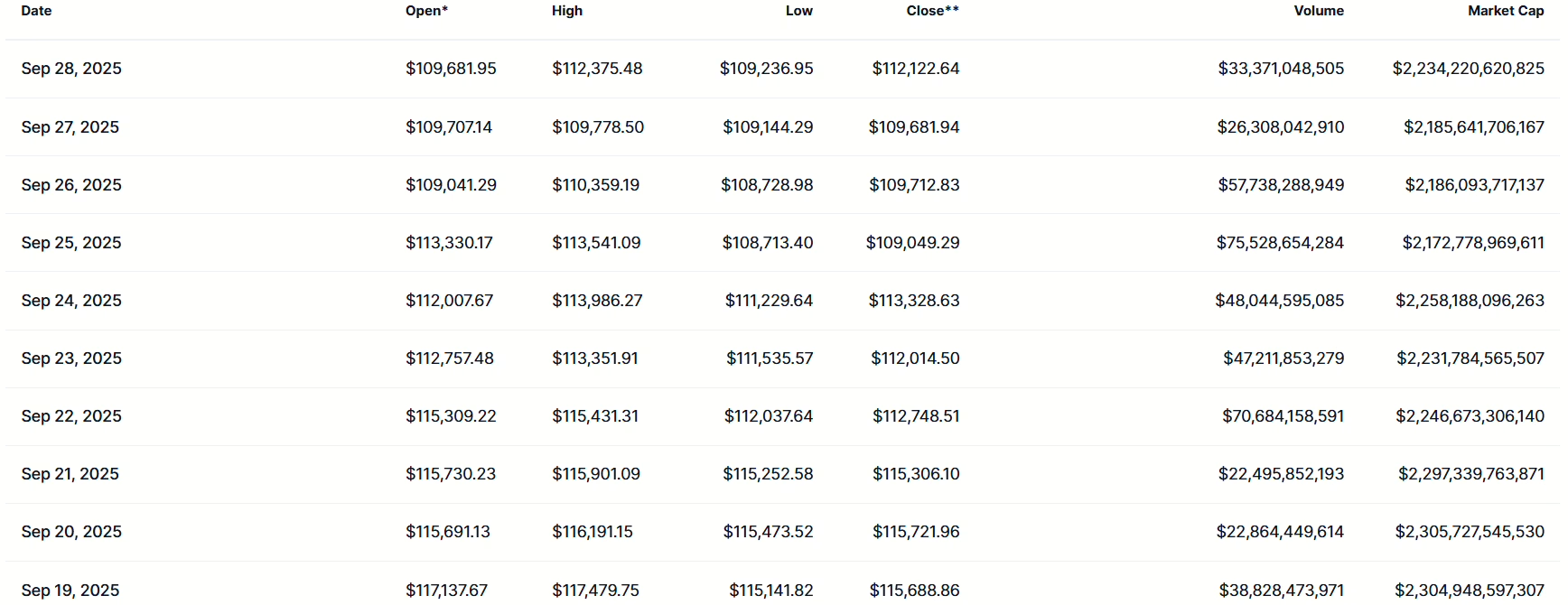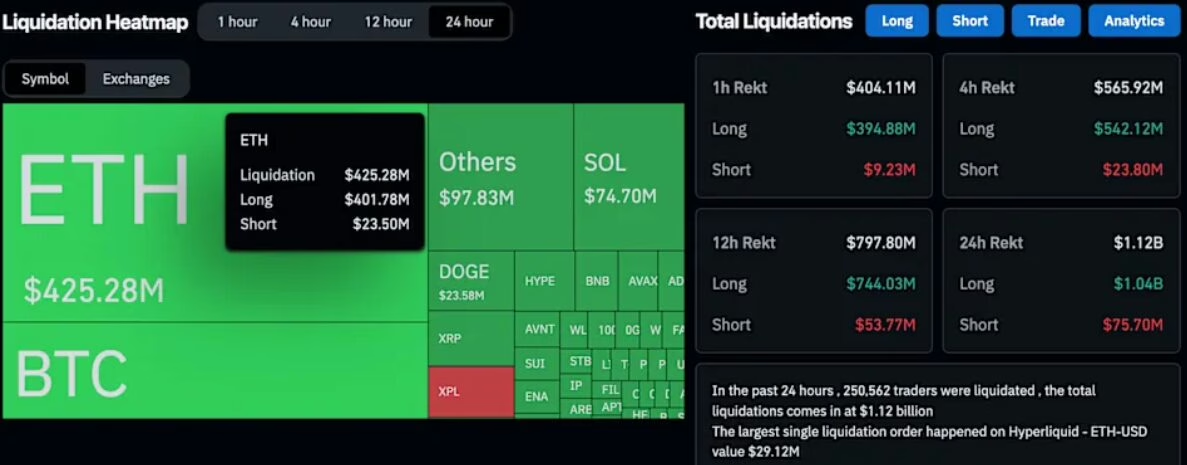Quick Breakdown
- $1B+ wipeout shakes markets: A sharp Bitcoin drop below $109K triggered over $1 billion in liquidations, dragging Ethereum, Solana, and crypto-linked equities lower.
- Confidence and leverage hit: The event flipped market sentiment, exposed the dangers of excessive leverage, and pushed traders toward safer strategies like spot trading and BTC over altcoins.
- Long-term lessons: Exchanges may tighten leverage rules, regulators could step in, and both retail and institutional players are expected to adopt stronger risk-management practices.
In September 2025, the crypto market experienced a huge disruption when more than $1 billion in positions were liquidated across major exchanges. This wave of forced selling caused sharp price swings and caught the attention of traders and investors worldwide.
Such massive liquidations highlight how quickly volatility can escalate in crypto markets. Beyond the immediate losses, they raise questions about risk management, market stability, and how prepared investors are for sudden downturns.
Understanding these events can help traders navigate future turbulence more confidently.
What triggered the mass liquidations?
Bitcoin tumbled below $109,000, its weakest level in nearly a month. This sharp decline set off a chain reaction in leveraged markets, forcing many long positions to be liquidated.

Steep Declines in Altcoins
Ethereum plunged, dropping toward $3,800 and erasing gains made since early August. Solana also fell below $200, down 8% in a single day. With Ether leading over $400 million in long liquidations and Bitcoin contributing $265 million, the downturn across major coins intensified the sell-off.

Leverage Flush in Derivatives Markets
The sudden drop triggered a widespread leverage wipeout, with more than $1.1 billion worth of positions liquidated in a short span. Traders who had bet heavily on rising prices (longs) were the hardest hit.
Spillover Into Crypto-Linked Equities
The decline wasn’t confined to tokens. Crypto stocks also tumbled, with MicroStrategy (MSTR), the largest corporate holder of Bitcoin, falling as much as 10% to a five-month low. This shows how closely tied crypto-related equities are to digital asset price swings, making them just as vulnerable during downturns.
Technical Pressure Around Key Support Levels
Bitcoin’s nosedive put it near the late August–early September lows of just above $107,000. This level could serve as short-term support, but the pressure around it likely added to panic selling as traders rushed to exit before a potential breakdown.
Immediate effects on market confidence
Just days earlier, optimism had been high with Bitcoin and Ethereum climbing steadily, but the liquidation wave flipped sentiment almost overnight. Traders who had been confident in further gains suddenly faced doubt and caution. This shift made many step back from aggressive trading, creating a wait-and-see atmosphere in the market.
Fear of deeper declines
As Bitcoin fell toward key support levels, many investors worried the downturn could extend into a longer bearish phase. This fear led to reduced risk appetite and hesitation to re-enter the market. It also increased short-term volatility as panic-selling mixed with bargain-hunting.
Leverage trust shaken
The scale of liquidations, over $1 billion in 24 hours, highlighted the dangers of overreliance on leverage. Confidence in using high-risk strategies weakened, especially among retail traders who suffered the most losses.
Spillover into traditional finance perception
The sharp sell-off also affected crypto-related equities, signaling to traditional investors that crypto’s volatility can have ripple effects. This reinforced the perception of crypto as an unstable and unpredictable asset class.
Flight to safety within crypto
Confidence in altcoins eroded faster than in Bitcoin, pushing traders to favor BTC as a “safer” digital asset. This shift showed a lack of trust in the resilience of smaller tokens during market shocks.
Long-term impacts on leverage and risk management
Tighter leverage practices by exchanges
Exchanges may reduce the maximum leverage they offer, especially on popular assets like Bitcoin and Ethereum, to minimize systemic risk. Past events have shown that unchecked leverage amplifies volatility, so stricter limits are likely.
Increased caution among retail traders
Retail investors burned by heavy losses may become more conservative, avoiding high-risk leverage altogether. Instead, many could shift toward spot trading or lower leverage ratios. Over time, this behavioral change can create a healthier, less speculative market environment.
Greater institutional focus on risk controls
Institutional players may demand stronger safeguards, such as improved margin requirements and liquidation protocols. Their involvement could push exchanges to adopt more transparent and robust risk-management frameworks.
Regulatory pressure for leverage oversight
Large liquidation events attract the attention of regulators, who may impose stricter rules on margin trading. Governments could mandate disclosure requirements, leverage caps, or investor sentiments and protections.
Long-term decline in speculative excess
As more participants recognize the dangers of overleveraging, the market could gradually mature with fewer speculative blow-ups. This could stabilize prices and increase investor confidence.
Lessons for investors and exchanges
For investors, the event underscores the need to set stop-loss orders, diversify portfolios, and avoid putting too much capital into single trades. For exchanges, it’s a reminder to strengthen margin requirements and liquidation protocols. Both sides benefit when risk is managed proactively rather than reactively.
Leverage is a double-edged sword
While leverage can amplify gains, it also magnifies losses when markets turn sharply. Investors must use it sparingly, and exchanges should ensure leverage offerings don’t create systemic risks. The lesson is clear: moderation with leverage leads to survival in volatile markets.
Diversification of strategies and tools
Investors should combine spot trading, derivatives, and hedging strategies to spread risk. Exchanges can encourage this by offering educational tools and safer trading products. This helps create a more resilient trading environment where losses are less concentrated.
Building long-term resilience
Investors should shift focus from short-term speculation to long-term positioning, while exchanges should invest in infrastructure that can handle extreme volumes without disruption. This dual approach fosters confidence in crypto as a maturing financial market.
Conclusion: a warning sign or healthy market correction?
The $1 billion liquidation wave can be seen in two ways: as a stark warning sign of how fragile over-leveraged markets remain, or as a healthy reset that flushes out excess risk and restores balance.
While the immediate shock shook prices and confidence, it also reinforced critical lessons about leverage, risk management, and the influence of external economic forces. Ultimately, whether this is viewed as a setback or a step forward depends on how investors and exchanges adapt, turning volatility into an opportunity to build a more resilient crypto market.
Disclaimer: This article is intended solely for informational purposes and should not be considered trading or investment advice. Nothing herein should be construed as financial, legal, or tax advice. Trading or investing in cryptocurrencies carries a considerable risk of financial loss. Always conduct due diligence.
If you would like to read more articles like this, visit DeFi Planet and follow us on Twitter, LinkedIn, Facebook, Instagram, and CoinMarketCap Community.
Take control of your crypto portfolio with MARKETS PRO, DeFi Planet’s suite of analytics tools.”




















